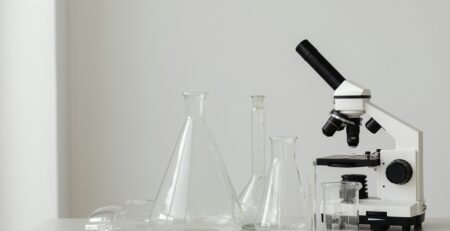29
Aug
Beakers vs Flasks: Which Should You Use for Mixing and Heating?
Beakers and flasks are the backbone of laboratory glassware, yet many labs misuse them interchangeably. While both can hold, mix, and heat liquids, their design differences make them better suited for distinct applications. Choosing the right glassware ensures accuracy, efficiency, and safety.
Beakers – Open and Versatile
Borosilicate beakers, especially BORO 3.3 varieties, are designed with a wide opening and spout for easy mixing, pouring, and solution preparation. They’re ideal for:
- Heating liquids on hot plates or open flames (with gauze).
- Dissolving solids into solvents.
- Carrying out rough volume measurements.
Their open design makes them versatile but also increases the risk of evaporation and contamination during longer experiments.
Flasks – Controlled and Stable
Conical flasks (Erlenmeyer flasks) are narrower at the neck, which reduces splashing and limits evaporation. This makes them well-suited for:
- Heating reactions with reduced loss of vapour.
- Mixing by swirling without spillage.
- Storage or transport of solutions with stoppers.
Their design also makes flasks safer for titrations and experiments where reducing air exposure is crucial.
Which Should You Choose?
- For open mixing and easy pouring → Beakers are the best choice.
- For heating where vapour retention matters → Flasks provide better control.
- For educational labs → Both are essential; beakers for demonstrations, flasks for safe mixing.
- For research labs → Combining both ensures accuracy, safety, and reproducibility.
Lab Anecdote
At a Brisbane research facility, analysts found their titration results varied when using beakers. By switching to flasks for titrations and retaining beakers for solution prep, they achieved consistent reproducibility and reduced reagent waste by 15%.
Sustainability Insight
Both beakers and flasks made from BORO 3.3 borosilicate glass are long-lasting and recyclable, helping Australian labs cut down on plastic use. By maintaining glassware properly, labs can extend product life cycles by years, reducing both costs and waste.
FAQs
Can beakers and flasks both be used on flames?
Yes, if they are BORO 3.3 glass, but indirect heating is recommended for both.
Why do flasks reduce spillage better than beakers?
Their narrow neck allows swirling without liquid escaping, unlike open beakers.
Is one more sustainable than the other?
Both are reusable and recyclable. The key is choosing durable BORO 3.3 glass and avoiding disposable alternatives.
Comparison Table – Beakers vs Flasks
| Feature | Beakers | Flasks (Erlenmeyer) |
|---|---|---|
| Design | Wide mouth, open top | Narrow neck, conical shape |
| Best For | Mixing, heating, rough volume | Titrations, swirling, storage |
| Heat Use | Excellent with BORO 3.3 | Excellent with BORO 3.3 |
| Vapour Loss | High | Low |
| Sustainability | Reusable, recyclable | Reusable, recyclable |
References
- ISO 3585: Borosilicate Glass 3.3 Properties
- ASTM E438: Standard for Laboratory Glassware
- University of Melbourne – Chemistry Teaching Lab Guidelines
- CSIRO – Lab Sustainability Practices

